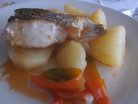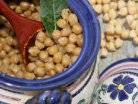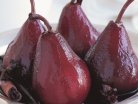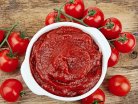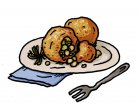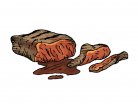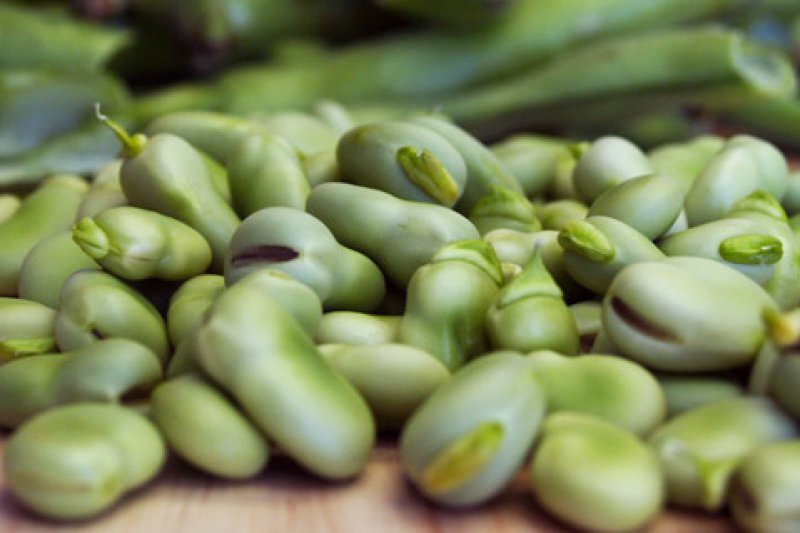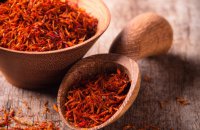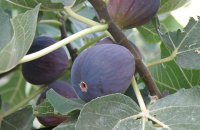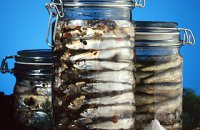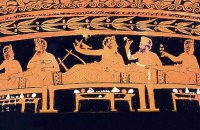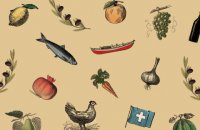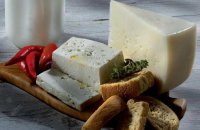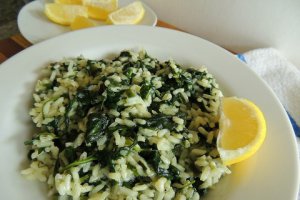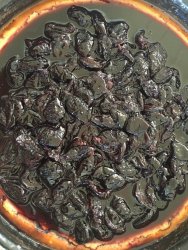I learned to like broad beans from my husband's grandmother, who divulged her secret for cooking them to me as we sat around her musty ancient dining room one spring day, sopping up the last of the broad bean and artichoke stew she had made, a dish she cooked once a week from April to the beginning of May, and one which has always heralded spring in the Greek kitchen.
Broad beans, or fava beans as they are more widely known in the United States, have been a staple in the Greek kitchen since time immemorial. Together with the lentil and the chick pea, they make up the trinity of indigenous beans that Greeks consumed long before Columbus brought other species back from the New World, thus changing the face of European cookery.
Cooking fava beans the Greek Way
There are many preparations for fava beans in Greece, mostly all falling under the category of stews and casseroles. Usually, they are cooked up together with other spring staples, such as artichokes and fresh peas. Sometimes, when very young and tender, they are shelled and eaten raw, as a salad. Once their season is over though, they continue to be savoured all year long in their dried form. Dried fava beans taste quite different from the fresh ones. They are starchy and dense and food more suitable for winter. The best recipes for the dried beans are found in Crete, where, among other things, they are either stewed with tomatoes, onions and herbs, or cooked slowly until they disintegrate into a creamy puree, then mixed with olive oil and served with pungent accompaniments, such as salted sardines.

A Little History
The fava bean was not always regarded as a food fit for human consumption despite its long history on the tables of the Mediterranean. Its history is rife with superstition, prohibition, magic and fear. The ancient Greeks ate broad bean soup, and also ate the bean green and raw, in its pods. Yet among certain Greeks in the ancient world, eating the bean was strictly taboo. Pythagoras and his followers imbued the fava bean with a profound mysticism, completely ignoring its nutritional value and prohibiting its consumption. The mathematician and philosopher spent a good part of the 45 years he spent studying, in Egypt, where he learned of the concept of reincarnation and of the transmigration of the soul. His association with Egyptian priests may have led him to associate the bean with the sacrosanct. According to Colin Spencer in his book "The Heretic's Feast", the ancient Egyptian word for bean, iwryt, is similar to iwr, which means to conceive, or to generate. Pythagoras may have forbidden his followers to eat the beans because he believed they were composed of the same material that generates human beings, or, because he thought that broad beans contained the souls of the dead. The broad bean, looked at sideways, could be said to resemble the female genitalia, another indication that it was sacred, and somehow connected with creation.
Some explanations as to why Pythagoras forbade bean-eating are more prosaic. The beans can be toxic to people who are allergic to them, so they became generally taboo. Even today, it is a common misbelief in Greece that broad beans are poisonous (Favism or the allergic reaction to the beans, is a hereditary condition). To this day, although no longer taboo, the broad bean is still connected to funerary rites. In Greece, until not very long ago, it was one of the main ingredients in the polysporia, the sweetened dishes made of grains and legumes, that were left as offerings to the saints and to the dead on certain holidays throughout the year.
How to Clean Favas
Fresh Beans: If the beans are young and small, they really only need to be washed. If larger, then the fibrous spine along the shell needs to be removed using a paring knife. If the shell is very tough, discard it altogether and just use the beans themselves. These simply need to be washed.
Dried beans: These call for slightly more preparation. They need to be soaked overnight with some baking soda. This softens their tough and unpleasant skin, while also enabling the removal of the shell. Remove the black "eye" on the spine of the bean with a small, sharp knife.
Please note that fresh and dried beans are not interchangeable in recipes since they have very different flavours and textures.
See our recipes with fava beans:
Raw Artichoke and Baby Fava Bean Salad
Broad Fava Bean Patties
Fava Beans, Peas and Artichokes


























